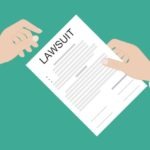Too often employees experience discrimination at work but lack the documents and other evidence necessary to prove they were treated differently due to their gender, age, race, or other protected characteristic. With this in mind, let’s highlight four types of documents that an employee should have access to, which can play a pivotal role in the outcome of their employment discrimination case. Talk with an employment discrimination lawyer for a more in-depth analysis.
Although the documents and information discussed below should be available to most employees, it is important not to access or take documents from an employer that may contain trade secrets, personal information about other employees, client lists, or otherwise proprietary/confidential information. Consult with an employment discrimination lawyer if you have questions about which documents may be considered “off limits.”
#1 Job Performance Evaluations
Many companies provide employees with an annual job performance evaluation in which they rate or describe the employee’s work and results. These appraisals can be extremely valuable evidence for an employee to counter the employer’s defenses in an employment discrimination case. In many situations, to explain the action a company took against an employee, such as denying a promotion, cutting their bonus or stock awards, or terminating their employment, the company will claim that it did so in response to the employee’s job performance problems. But if the employee can point to recent positive job performance review(s), this helps discredit the company’s explanation and demonstrates that the claim of poor performance is instead an after-the-fact pretext for discrimination. Similarly, any awards given to the employee by the company serve as a potent retort to claims of inadequate job performance.
#2 Emails, Texts, Slack Messages, etc.
 One of the most ubiquitous—and powerful—pieces of evidence are contemporaneous emails (or texts and other types of messaging) regarding particular projects or workplace decisions that are at issue in the employment discrimination claim. Consider a scenario where the company claims it denied a promotion to the employee because they supposedly performed poorly on a specific proposal. If the employee has emails from their managers praising their work on the proposal in question, then the company will be hard-pressed to carry the day on its justification for why it denied the promotion. This in turn can help demonstrate that the employee’s age (or race, gender, etc.) was the true motivation for the company’s action.
One of the most ubiquitous—and powerful—pieces of evidence are contemporaneous emails (or texts and other types of messaging) regarding particular projects or workplace decisions that are at issue in the employment discrimination claim. Consider a scenario where the company claims it denied a promotion to the employee because they supposedly performed poorly on a specific proposal. If the employee has emails from their managers praising their work on the proposal in question, then the company will be hard-pressed to carry the day on its justification for why it denied the promotion. This in turn can help demonstrate that the employee’s age (or race, gender, etc.) was the true motivation for the company’s action.
Likewise, the pervasive use of email and texts can cause its users to “let their guard down” and occasionally say things in email that reveal their true mindset, which is indispensable in an employment discrimination case.
#3 Arbitration Agreement
While the arbitration agreement is not necessarily evidence, it does play a key role in determining whether your case will be heard in open court before a jury of your peers, or behind closed doors in private arbitration. There are pros and cons to arbitration that will be discussed in another article. And arbitrators do sometimes award large amounts to employees. As a general matter, however, arbitrators are less prone to award big verdicts to employees as compared to juries. Many large companies require employees to sign an arbitration agreement when they are hired or during their employment, and often the employee does not even remember signing the document. Review the arbitration agreement carefully to better understand precisely which claims must be arbitrated as certain agreements do not cover all employment claims and other claims, such as whistleblower retaliation under the Sarbanes-Oxley Act (SOX), are not subject to mandatory arbitration.
#4 Demographics Of, And Prior Lawsuits Against, The Company
Although demographics and prior lawsuits are not technically “documents,” this type of information can be critical background evidence in an employment discrimination case. Take the example of a glass ceiling/promotion discrimination case involving a senior vice president role. If the company lacks women in these senior roles, this can be relevant evidence in a promotion discrimination claim in both an intentional discrimination (disparate treatment) and unintentional discrimination (disparate impact) context. If 50% of the vice presidents are women yet only 10% of senior vice presidents are women, this evidence strongly supports an inference of discrimination.
 Likewise, if the company has previously been the subject of promotion discrimination lawsuits this also can support the claim. Courts will look at a variety of factors to determine if the jury can hear this evidence, including whether it involved the same decision-makers, how recently it occurred, if a verdict was rendered, etc. This information is available in a variety of forums, including a simple Google query and searching court websites through services like Public Access to Court Electronic Records (Pacer).
Likewise, if the company has previously been the subject of promotion discrimination lawsuits this also can support the claim. Courts will look at a variety of factors to determine if the jury can hear this evidence, including whether it involved the same decision-makers, how recently it occurred, if a verdict was rendered, etc. This information is available in a variety of forums, including a simple Google query and searching court websites through services like Public Access to Court Electronic Records (Pacer).
During discovery, a much broader range of documents and information will be exchanged, but these four categories of documents should be available to an employee relatively early in the dispute and can go a long way toward deciding the fate of an employment discrimination case.
If you have experienced employment discrimination or whistleblower retaliation, call a top rated employment attorney at (202) 769-1681, or start your preliminary consultation online.
